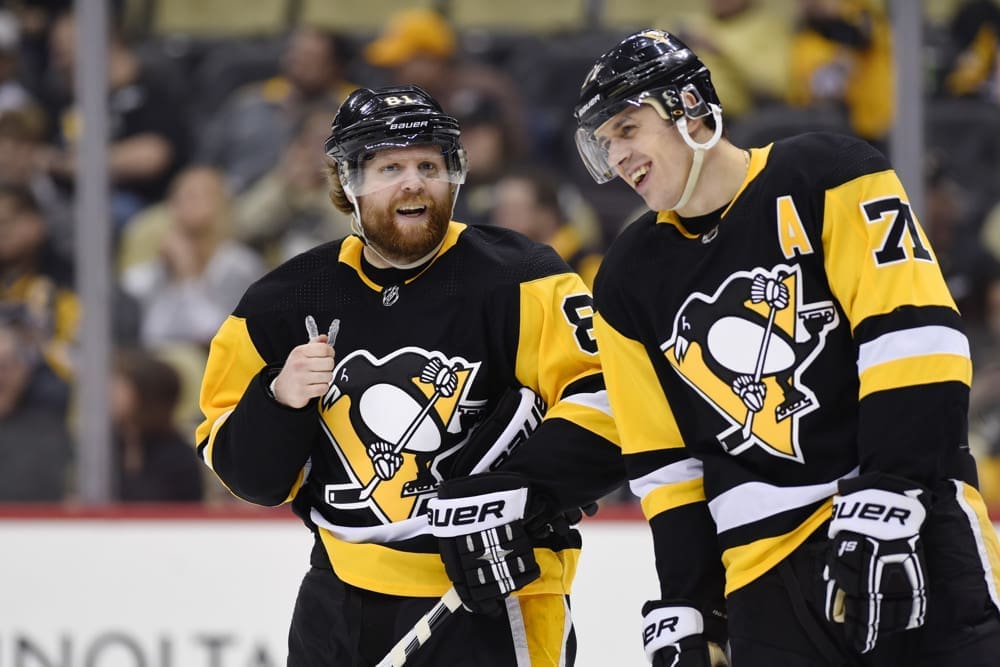Penguins
GM Jim Rutherford’s Mistake Shaped Penguins Disappointing Season

The stars aligned and the details began to fit together. As Pittsburgh Hockey Now examined the Carl Hagelin trade tree Monday, a more significant conclusion became inescapable. Last November, Pittsburgh Penguins GM Jim Rutherford traded Hagelin to shake up what had become a stale Penguins core. He did make a mistake but the Hagelin trade for ineffective Tanner Pearson was only an outgrowth of the original, more substantial mistake which shaped the Penguins season and will shape this offseason, too.
Brace yourselves. Grab your pitchforks and torches.
“I didn’t see a point where our guys came together as a team, and I wonder if it’s because there’s too many guys content with where they’re at in their careers after winning a couple of Stanley Cups,” Rutherford said at the season-ending press conference on April 18. “Is that a signal where some of that has to be changed where you’ve got that eagerness again?”
Here we go.
Last summer, the Penguins GM didn’t trade Phil Kessel and that was the huge mistake. The dominoes which fell this season and led the Penguins to an influx roster which struggled to adopt the coach’s message can go back to that decision.
It led to even greater problems this season.
Sources told PHN the Penguins had at least a couple of interesting offers from middling teams which viewed Kessel as a player who could improve their fortunes. In talking to sources since the decision to stand pat at the 2018 NHL Draft, Pittsburgh Hockey Now believes the decision to keep Kessel was not unanimous.
Kessel was coming off a career year in which he popped for 92 points and led the Penguins power play to a franchise record. His value was never higher.
The storm clouds were on the horizon. The Penguins organization and head coach Mike Sullivan worked hard to tamp down stories of friction between him and Kessel. Sullivan addressed them directly at the draft.
Last June, Sullivan worked hard to put the problems in a better light.
“Have we had our differences? At times during the course of each season that we’ve been together, of course, we have. That’s the player-coach relationship which goes on between every team,” Sullivan said last June.
But it has become clear there were real issues.
Even Kessel said his year as “wasn’t one” of the good ones. The NHL game changed and Kessel struggled. His even strength goalless streak from early January to March has been dissected more thoroughly than a batch of frogs delivered to a 9th-grade Biology class.
Worst of all, as the coach and team leaders pushed for “buy-in” and commitment to the Penguins game, the fingers indirectly pointed at a couple of players who didn’t. Chief among those players was Kessel, even as Sullivan rebuffed a direct question about players who were refusing the message.
The Kessel-Evgeni Malkin connection became an albatross for the Penguins as they officially led the team in turnovers (Malkin had 84, Kessel had 78) and unofficially led the team in dumb plays. But there was not an end to the resistance, even as Malkin tried to use his old bag of tricks which includes deft stickhandling and aggressive effort.
The pair sank without accepting the Penguins new thrust.
Like two misbehaving kids in the back of the class, their combination only seemed to exacerbate the buy-in issues and message resistance. Opponents outscored the Penguins when Malkin and Kessel were together, yet their games remained stubbornly rooted in past successes, not current needs.
And Malkin said on several occasions he was frustrated with his season.
“I have to prove I’m a good player,” he told a Russian journalist at the World Championships in early May.
Rutherford Dealt the Wrong Player
This season, Rutherford had to shake up the core. Instead of dealing Kessel last June, in November Rutherford dealt Hagelin whom he later tried to reacquire. Rutherford spent the season fishing for more help as the Penguins middle lines were the subject of consternation and frustration.
Sullivan spoke on numerous occasions of trying to find production from “the middle lines.”
The Penguins situation improved when Rutherford acquired Nick Bjugstad and Jared McCann on February 1 for Derick Brassard, Riley Sheahan, and picks. But the improvement couldn’t overcome the greater problems.
The “buy-in” situation which centered on the Penguins second line didn’t improve and that is precisely where the Penguins lost their mojo. When important players reject the team strategy, things go sideways.
Stats become meaningless. Kessel had 82 points in 82 games and Malkin had 72 points in 68 games. Blogs and fans can cite stats and mount emotional defenses all day. Hockey goes beyond the paper. Kessel was a leading factor of the “stale” core and the issues appear to be a continuation from last season.
Now, reports from Sportsnet and TSN don’t shine a good light on Kessel trade value. Many teams view him as having too much baggage. That’s not “the media” driving a narrative, though the comment sections and social media will undoubtedly be filled with such posts.
Evgeni Malkin is a long staple of the franchise has earned the special status granted to great players. He can say things to coaches which mortal players cannot. It doesn’t mean he should. And even Malkin may find a new home as a result of the insubordination.
Kessel does not have such rank or privilege. Had Rutherford made the hard call last June, it’s easy to wonder if the Penguins team situation wouldn’t have reached this low point and the team would have had the necessary cohesion to make another Stanley Cup run, rather than facing a big shakeup.
Some in the Penguins organization realized it last summer. Not dealing Kessel then was the mistake which charted the disappointing course of the Penguins season.












